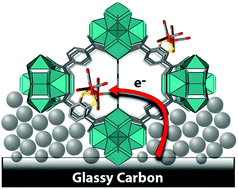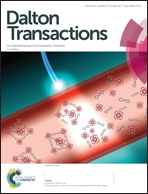Evaluation of two- and three-dimensional electrode platforms for the electrochemical characterization of organometallic catalysts incorporated in non-conducting metal–organic frameworks†
Abstract
The development of a reliable platform for the electrochemical characterization of a redox-active molecular diiron complex, [FeFe], immobilized in a non-conducting metal organic framework (MOF), UiO-66, based on glassy-carbon electrodes is reported. Voltammetric data with appreciable current responses can be obtained by the use of multiwalled carbon nanotubes (MWCNT) or mesoporous carbon (CB) additives that function as conductive scaffolds to interface the MOF crystals in “three-dimensional” electrodes. In the investigated UiO-66-[FeFe] sample, the low abundance of [FeFe] in the MOF and the intrinsic insulating properties of UiO-66 prevent charge transport through the framework, and consequently, only [FeFe] units that are in direct physical contact with the electrode material are electrochemically addressable.

- This article is part of the themed collection: Dalton Transactions Inorganic Symposia


 Please wait while we load your content...
Please wait while we load your content...